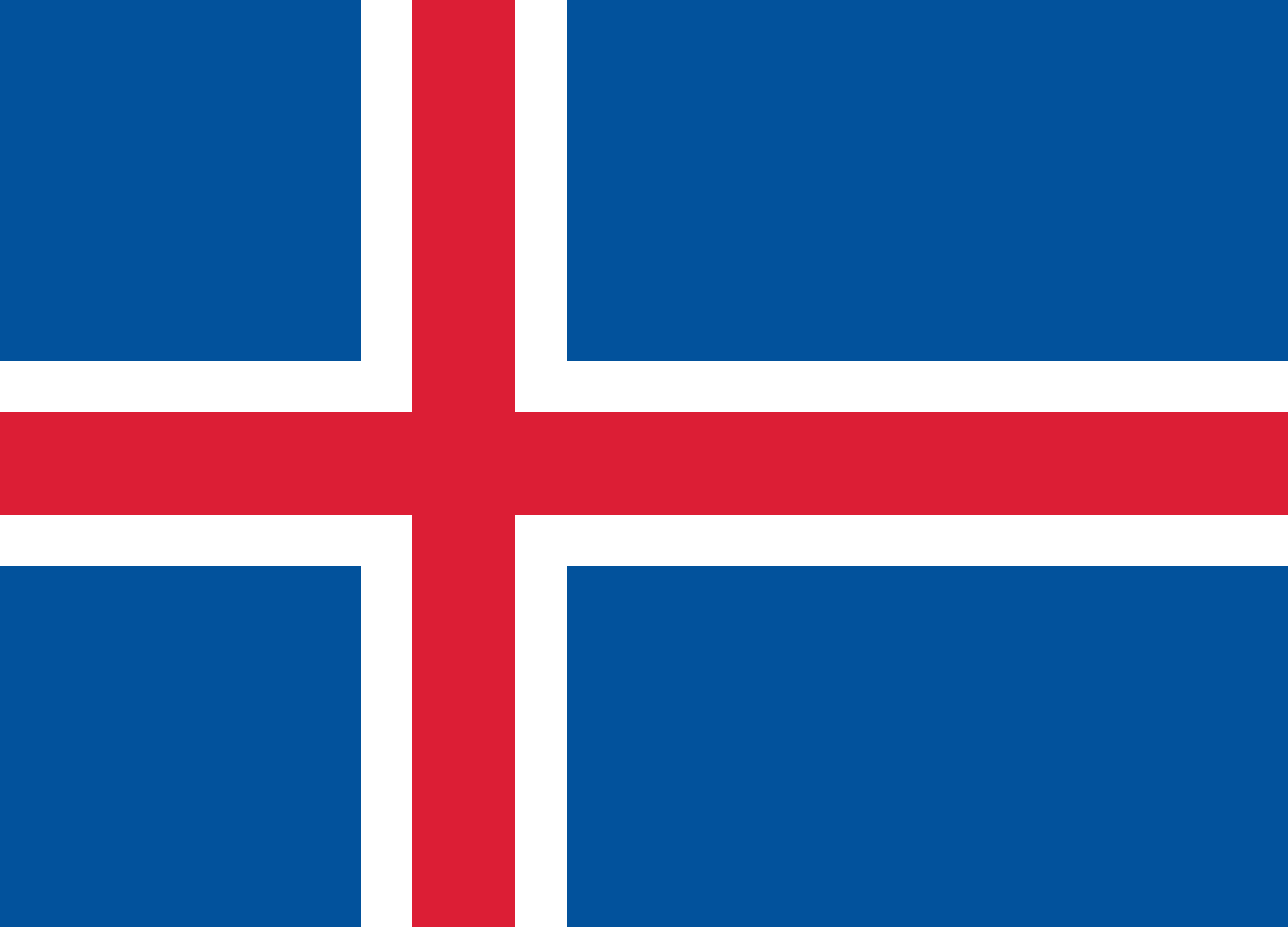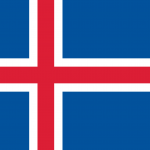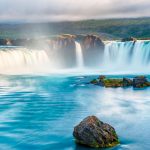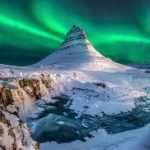Iceland, (Icelandic: Ísland) is a mountainous island nation in the north Atlantic Ocean, located between Europe and North America. Though not part of the continental mainland, the country is considered Nordic European. The name of the country—Iceland—may not be that appropriate: although 10% of Iceland is covered by glaciers, it has a surprisingly mild climate and countless geothermal hot-spots and hot springs. The native spelling (“Ísland”) is appropriate in English as well. Tipping isn’t done in Iceland and driving off-road is illegal.
Iceland is a stunningly beautiful place if you enjoy strange and desolate landscapes. The amount of daylight varies dramatically by season. The sun sets briefly each night in June, but it doesn’t get fully dark before it comes back up again. In the March and September equinoxes, days and nights are of about equal length, as elsewhere in the world. If you go in December, it’s almost 20 hours of darkness. Summer is definitely the best time to go, and even then the tourist traffic is still mild. The midnight sun is a beautiful sight and one definitely not to be missed. It is easy to lose track of time when the sun is still up at 23:00. Early or late winter, however, can be surprisingly good times to visit. In late January, daylight is from about 10:00-17:00, prices are lower than in the high season, and the snow-blanketed landscape is eerily beautiful. (Some sites are, however, inaccessible in the winter).
- Le bon jet au bon prix 24 heures sur 24, 7 jours sur 7
- +30 210 996 7870
- +30 693 23 32 090
- info@jets4you.net
Iceland

| Capital | Reykjavik, the northernmost capital in the world |
| Government | Constitutional republic |
| Currency | Icelandic króna (ISK) |
| Area | 103,000km² |
| Population | 322,000 (Oct 2013) |
| Language | Icelandic; English widely understood |
| Religion | Lutheran (official) 80.7%, other Protestant 4.1%, Roman Catholic 2.5%, Buddhist 0.2% |
| Electricity | 220V, 50Hz (European plug) |
| Country code | 354 |
| Internet TLD | .is |
| Time Zone | UTC |
For a personalized price for a private jet to or from Belarus, please contact us or call our 24/7 Flight Representatives at +30 210 996 7870 (24 HRS)
DESTINATIONS IN Iceland
RENT A PLANE TO Iceland
An underpopulated island marooned near the top of the globe, Iceland is, literally, a country in the making. It’s a vast volcanic laboratory where mighty forces shape the earth: geysers gush, mudpots gloop, ice-covered volcanoes rumble and glaciers cut great pathways through the mountains. Its supercharged splendour seems designed to remind visitors of their utter insignificance in the greater scheme of things. And it works a treat: some crisp clean air, an eyeful of the cinematic landscapes, and everyone is transfixed.









